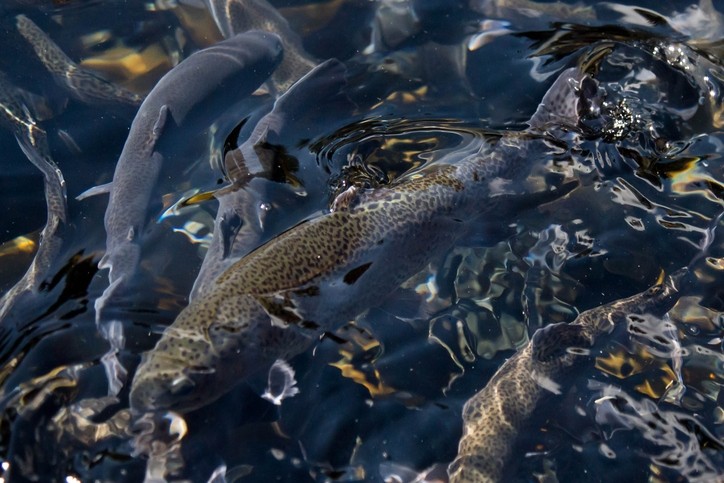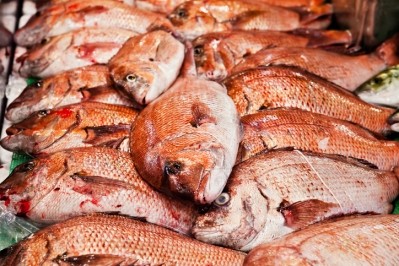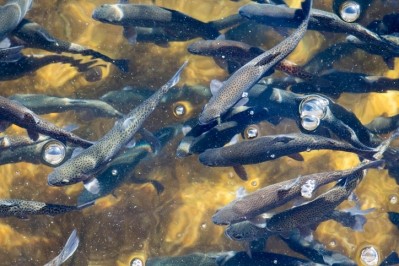Feeds containing melanoidins may support trout production

An international group of researchers from Chile, Argentina and Spain, examined the inclusion of melanoidins in the diets of farmed rainbow trout in an effort to examine potential side effects. The group published its work in the journal Aquaculture.
“The aim of this study was to assess the potential effects of a glucose-glycine melanoidin model on different biological parameters related with the dynamics of the digestion process in the rainbow trout Oncorhynchus mykiss,” the researchers said. “Including [for] the postprandial gastric evacuation, gastrointestinal pH changes after feeding, activity of acid and alkaline digestive proteases, growth performance, nutrient digestibility and the postprandial antioxidant capacity of plasma.”
In the feeding trials, researchers found that there was a small change in gut pH but little influence on gastric evacuation or digestive proteases, the researchers said. There also was a slight uptick in the digestibility of dry matter.
“Ingested glucose-glycine melanoidins exerted minor effects on the digestive function, particularly in relation to gut pH, and did not impair the digestibility of the main macronutrients,” they said.
However, the presence of dietary melanoidins also increased the postprandial antioxidant capacity of blood plasma, they said. “Further research is necessary to understand beneficial and deleterious effects derived from long-term ingestion of melanoidins and other Maillard-related compounds by fish,” they added.
Why melanoidins?
Melanoidins are the nitrogenous products generated in the Maillard reaction and can appear in feed ingredients that have amine groups, reducing sugars or lipid oxidation after being heated, the researchers said. Dried distiller grains with solubles (DDGS), a heated by-product generated by the ethanol industry are one source.
The components have not been well understood, they said. However, they are often linked to negative changes in performance when interacting with positively charged feed compounds in an animal’s digestive tract.
“Maillard products derived from bread-crust, after included in the diet, affected the distribution of calcium and magnesium in rat tissues but left the retention of these minerals unchanged,” they said. “Not only the absorption process, but also the enzymatic hydrolysis of macronutrients is potentially affected by browning reaction products.”
When model melanoidins are generated by mixing glucose and glycine or asparagine they have been found to have a negative effect on digestive trypsin and to hinder the activity of gastric proteases in an in vitro study of rainbow trout.
However, there also have been some positive consequences linked to the inclusion in the diet of melanoidins, said the researchers. “A number of these effects are related to their high antioxidant capacity of such compounds, which can improve the oxidative stability of fish meal during storage or contribute to the antioxidant capacity of the diet,” they added.
Data regarding the potential bioavailability of melanoidin in fish is scarce, they said.
Methods and materials
During the feeding trials, juvenile rainbow trout were given one of two fish- and cod liver oil-based diets, the researchers said.
The diets were non-heated and pelletized, they said. One acted as a control and other included 1.2% glucose-glycine melanoidins, which was considered to be an acceptable amount for potential use as a feed additive.
In the first feeding experiment, 150 juvenile rainbow trout were given either the control or melanoidin containing diet for10 days, they said. A sample of fish was collected after 2, 4, 7, 10 and 24 hours of digestion on the final day to check gut pH, acid protease activity and trypsin-like activity.
In the second feeding trial, the same diets were used and 198 juvenile rainbow trout were fed for 17 days, they said. Fecal matter was collected for analysis on days 11-17.
On day 17, a selection of fish was harvested, blood samples were taken and gut pH was measured, the researchers said. Remaining fish were fasted for 72 hours and then collected to establish final weight and some were taken for analysis.
Results
Overall, the findings suggested that there were some changes to pH, but did not disrupt the digestion of nutrients, the researchers said.
“The results pointed to a small effect on gut pH in interaction with digestion time, and a lack of effect on gastric evacuation and digestive proteases,” they said. “In addition, melanoidins were associated with a small increase in the digestibility of the diet dry matter, leaving unchanged nitrogen and phosphorus digestibility.”
Fish found both diets palatable, they said. Survival rates were 100% for all tanks and no difference was found for gastric evacuation or gastric pH when comparing diets, but a change over time was noted for the control diet.
“The presence of glucose-glycine melanoidins did not affect the activity of digestive proteases, neither pepsin-like nor trypsin-like activities, but they changed significantly over time (p = 0.001 and p = 0.002, respectively),” said the researchers. “Data showed the stability of pepsin-like activity while the stomach before 24 h post-feeding, and the increase of trypsin-like activity from the onset of gastric evacuation (after 7 h of digestion) onwards.”
During the second experiment, no significant changes for growth performance, diet ingestion, weight gain, specific growth rate or feed conversion ratio were found, they said.
Gastric pH was not altered initially by the presence of melanoidins, but tended to drop over time – however, this trend was slower in the experimental diet, they said.
The digestibility of coefficients of macronutrients was high and similar between the diets, they said. Fish on the trial diet had a slightly improved digestion of fiber and apparent digestibility coefficients values for dry matter and energy were higher for fish on the trial diet.
The antioxidant capacities were higher in the trial diet, said the researchers. However, they also presented a different pattern over time than the control diet.
Source: Aquaculture
Title: Effects of dietary melanoidins on digestive physiology, nutrient digestibility and plasmatic antioxidant capacity of the rainbow trout Oncorhynchus mykiss
Authors: Xavier Serrano, Adrián Hernández, Gabriel Morales, Majorie Larson, Joceline Ruiz, Paola Orellana, Manuel Díaz, Francisco Moyano, Lorenzo Márquez
DOI: published online before print: doi.org/10.1016/j.aquaculture.2018.05.045















